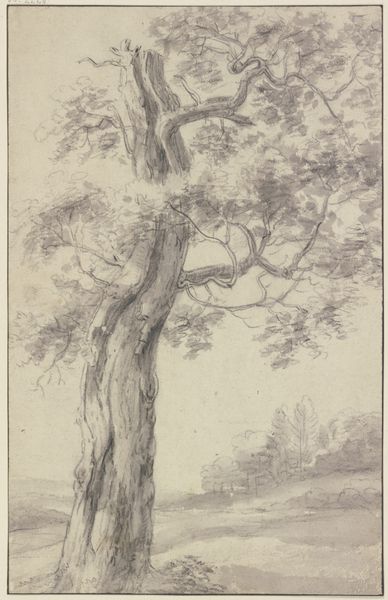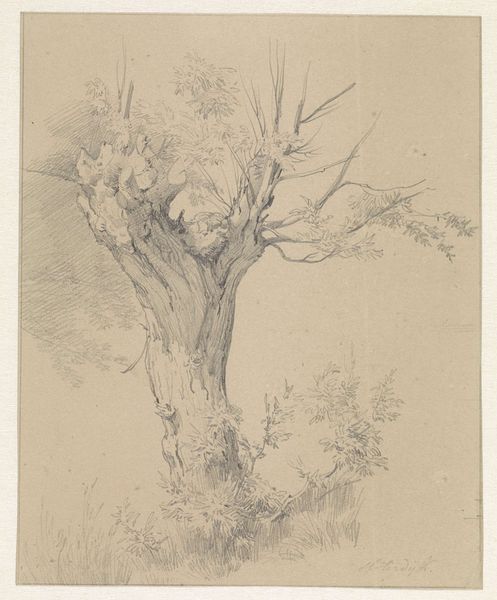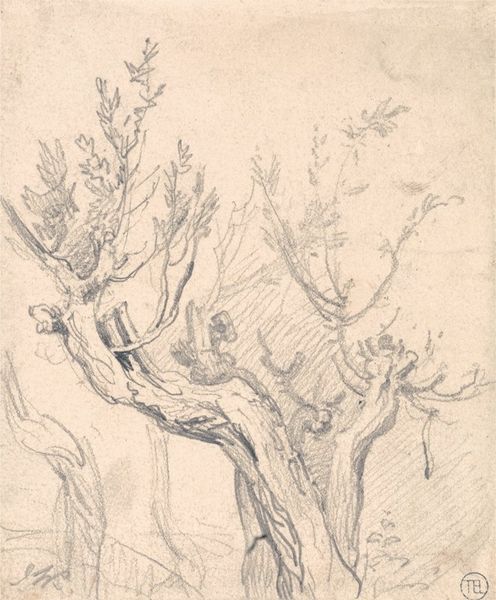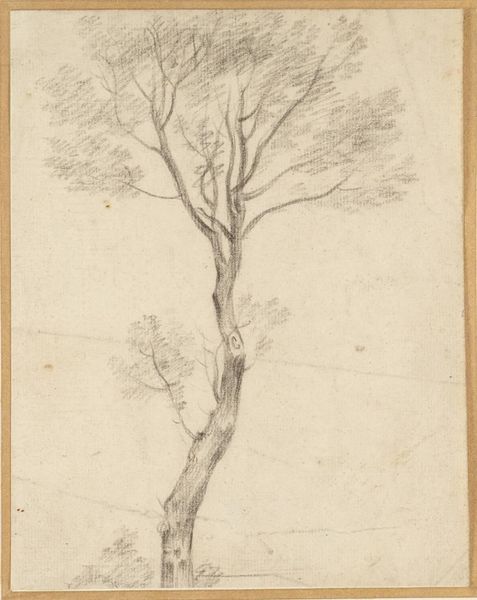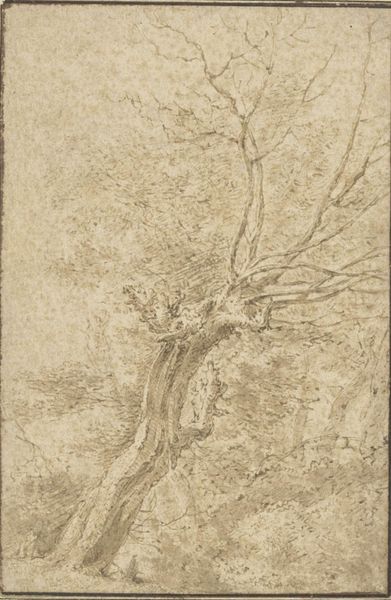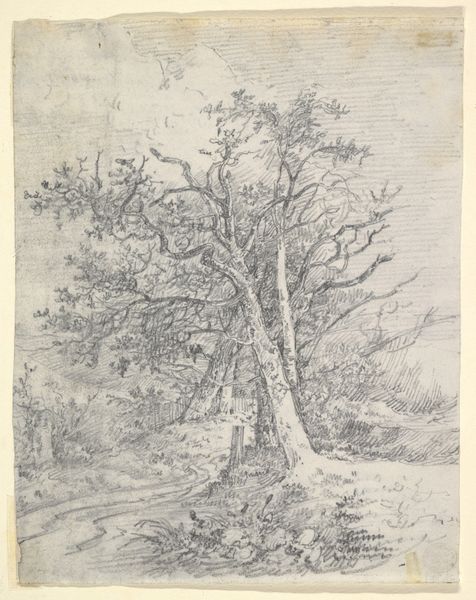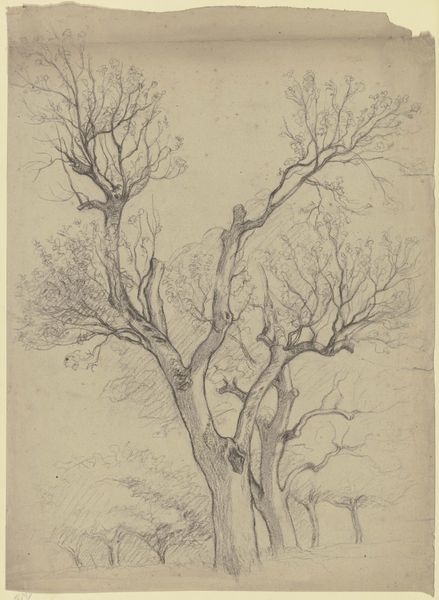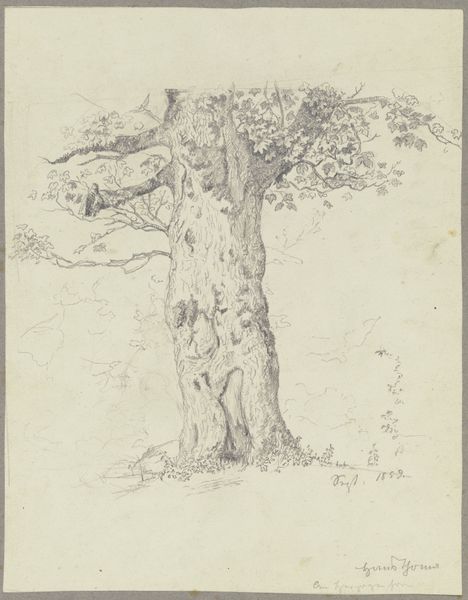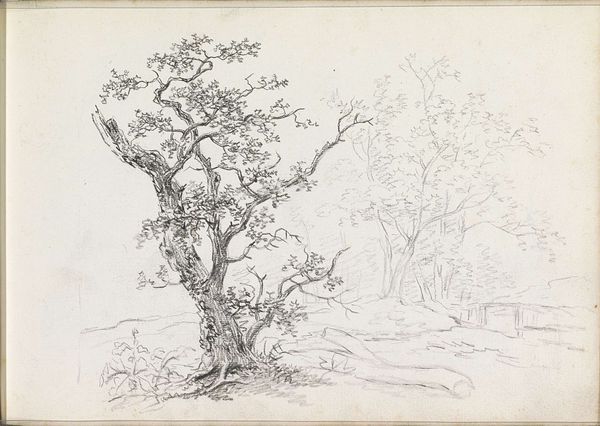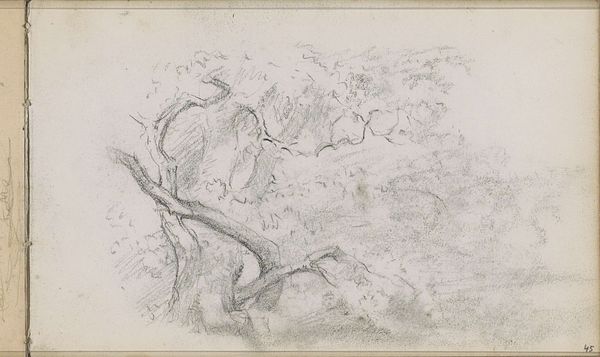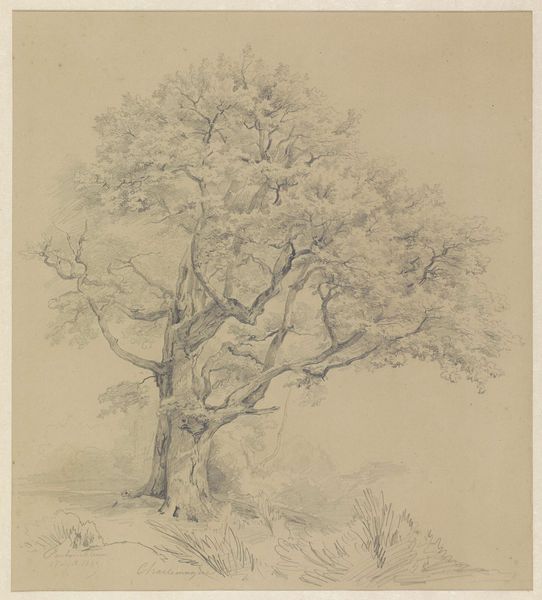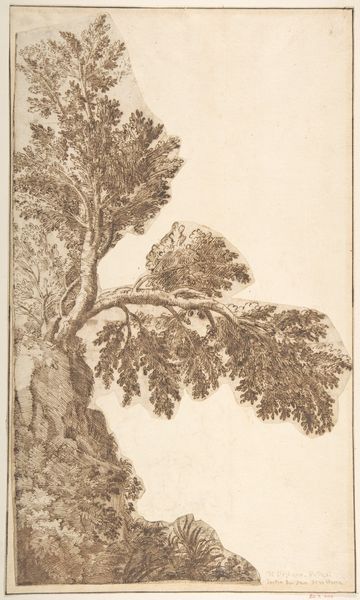
Dimensions: height 275 mm, width 190 mm
Copyright: Rijks Museum: Open Domain
Curator: Looking at Claude-Joseph Vernet’s "Boomstudies," created sometime between 1724 and 1789 and housed here at the Rijksmuseum, what strikes you first about this pencil drawing? Editor: Its quiet intimacy. A single tree dominates the foreground, sketched with incredible sensitivity. It's a portrait of resilience, almost, the rough bark rendered with such detailed observation. I'm interested in what this drawing represents within a colonial context. Vernet traveled extensively, painting landscapes that often served a specific ideological function. Curator: That's a key point. Vernet was working at a time when landscape painting was being utilized to project power and control, often related to colonial ventures. He's celebrated for his idealized and dramatic landscape paintings, especially his seaports. Considering this drawing is part of the collection at the Rijksmuseum, which holds art acquired during a specific colonial legacy, that reading is quite poignant. How do you see "Boomstudies" fitting into that? Editor: Well, while less overtly propagandistic, this kind of detailed study also contributes to an understanding, almost a claiming, of the natural world. A drawing like this, depicting the "essence" of a tree, informs how one views and uses landscape. There's a relationship here, perhaps not explicit, to the exploitation of natural resources, to cataloging the world. Curator: It's crucial to look at the networks of knowledge production surrounding art objects. These “boomstudies,” as it's titled here, allowed the artist to create a visual language around nature. Vernet’s drawings display not only careful studies of the botanical, but his landscapes engage heavily with philosophies about sublime beauty. He romanticizes a world even as it gets extracted for its worth. How does this examination reflect current environmental concerns, if at all? Editor: Exactly. It reminds us to interrogate whose perspective is being centered, what narratives are being told, and at what cost. As we appreciate the drawing's artistic merit, we must be critical about how its historical context informs its current significance. Curator: That reflective approach makes "Boomstudies" all the more resonant. I see Vernet’s sensitivity for these woody lives, yet he represents part of that exploitative eye from his moment in time. Editor: Precisely, it invites that double vision. A lovely, somber rendering that begs complex readings around nature, possession, and history.
Comments
No comments
Be the first to comment and join the conversation on the ultimate creative platform.
